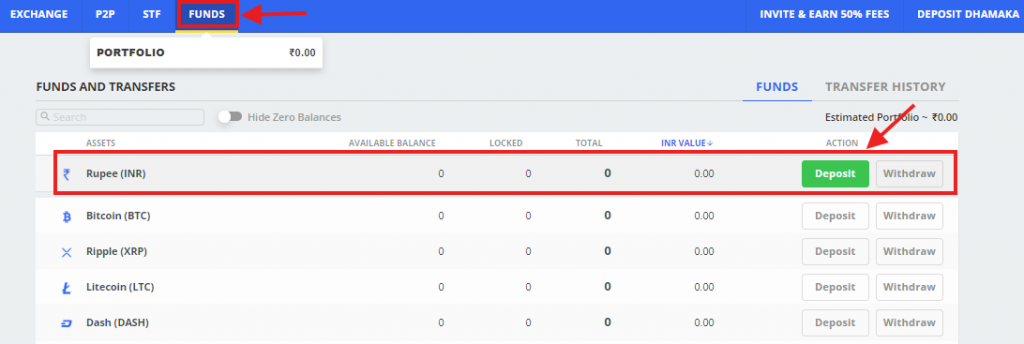Table of Contents
Cosmos is a blockchain platform that powers a network of blockchains engineered to scale and work together. The platform works on a network of many separate blockchains referred to as zones. These zones are powered by Tendermint BFT, which provides a high-performance, reliable, and secure PBFT-like consensus engine with stringent fork-accountability overseeing malicious behavior of actors. Scaling public proof-of-stake blockchains is a breeze using the Tendermint BFT consensus algorithm.
In the words of its developers – they call it ‘a novel blockchain network architecture’, Cosmos presents a vision of blockchain technology that integrates communication between separate blockchains. The Cosmos network’s Hub and Zones connect via an inter-blockchain communication (IBC) protocol, similar to a virtual UDP or TCP for blockchains. Tokens are securely and swiftly moved from one zone to another without the requirement for exchange liquidity. All inter-zone token transfers are routed through the Cosmos Hub, which keeps track of each zone’s total token holdings. Each zone is isolated from the failure of other zones by the Hub. Zones provide future compatibility with new blockchain breakthroughs because anybody can connect a new zone to the Cosmos Hub.
Cosmos isn’t just a single distributed ledger, and the Cosmos Hub isn’t a fortress or the universe’s center. The developers have created a protocol for an open distributed ledger network that can serve as a new baseline for future financial systems based on cryptography, sound economics, consensus theory, transparency, and accountability.
Cosmos powered by Tendermin
The Cosmos Hub is the Cosmos Network’s first public blockchain, powered by its Tendermint BFT consensus algorithm. The Tendermint open-source project was founded in 2014 to solve Bitcoin’s proof-of-work consensus algorithm’s speed, scalability, and environmental concerns. The Tendermint team conceptually demonstrated a one-of-a-kind proof-of-stake cryptocurrency that addresses the nothing-at-stake problem suffered by first-generation proof-of-stake cryptocurrencies such as NXT and BitShares1.0 improving on proven BFT algorithms developed at MIT in 1988.
Practically all Bitcoin mobile wallets rely on trusted servers for transaction verification. Tendermint delivers instant and provably secure mobile-client payment verification, unlike other blockchain consensus solutions. Mobile wallets can receive rapid confirmation since the Tendermint is designed never to fork, making trustless and practical payments a reality on smartphones. This has far-reaching implications for Internet-of-Things applications.
Validators in Cosmos play a similar role to Bitcoin miners. Validators are dedicated, secure workstations in charge of committing blocks. Non-validators can delegate their staking tokens (known as “atoms”) to any validator to receive a share of block fees and atom rewards, but they risk being penalized (slashed) if the delegate validator is hacked or breaks the protocol.
Get WazirX News First
How is Cosmos governed?
Validators and delegators on the Cosmos Hub can vote on proposals to automatically adjust system settings (such as the block gas limit), coordinate upgrades, and vote on revisions to its human-readable constitution. The constitution enables stakeholders to work together on theft and bugs, allowing for a faster and more efficient resolution.
Each zone can also have its constitution and governing structure. The Cosmos Hub, for example, might have a body that mandates immutability at the Hub (no rollbacks except for flaws in the Cosmos Hub node implementation), but each zone can specify its rollback policy.
The Cosmos network allows its users complete freedom and the option for permissionless experimentation by facilitating interoperability among different policy zones.
The Hubs and Zones of Cosmos
At its core, the Cosmos Hub oversees a slew of separate blockchains known as “zones” (or “shards” in allusion to the database scalability technique known as “sharding”). The Hub can maintain track of the state of each zone thanks to a steady stream of recent block commits from zones displayed on the Hub.
Similarly, each zone maintains track of the Hub’s status (but zones do not keep up with each other except indirectly through the Hub). Information packets are then exchanged from one zone to another by publishing Merkle-proofs as proof that the data was sent and received. This mechanism is known as Inter-blockchain communication, or IBC for short.
Hubs
Individual users or zones can hold tokens on the Cosmos Hub, a blockchain that supports a multi-asset distributed ledger. In a unique concept known as a “coin packet,” these tokens can be transported from one zone to another. The Hub is in charge of maintaining the entire amount of each token’s global invariance throughout all zones. The sender, Hub, and receiving blockchains must all commit IBC coin packet transactions.
The security of the Cosmos Hub is critical since it serves as the central ledger for the entire system. While each zone may be a Tendermint blockchain with as few as four validators (or even less if BFT consensus isn’t required), the Hub must be protected by a globally decentralized set of validators capable of surviving the most severe attack scenarios, such as a continental network partition or a nation-state sponsored attack.
Zones
A Cosmos zone is a self-contained blockchain that communicates with the Hub using IBC messages. A zone is a multi-asset dynamic multi-signature account that can transmit and receive tokens using IBC packets. Like a cryptocurrency account, a zone can’t send more tokens than it possesses, but it can accept tokens from others who do. A zone can be identified as a “source” of one or more token kinds, allowing it to inflate the supply of those tokens. Validators of a zone connected to the Cosmos Hub can stake atoms from the Hub. Users must submit tokens to zones they trust because the Cosmos Hub does not verify or execute transactions committed on other zones.
Atom Prices in India
1 Atom is approximately ₹2,074.54 as of 21 February 2022.

Figure: Atom price INR chart (as of 21 February 2022)
You can trade, buy or sell Atom at India’s trusted cryptocurrency exchange platform WazirX.
How to Buy Cosmos (Atom) online with WazirX
To purchase Cosmos online with WazirX, you must first create an account on the platform. Follow the steps below if you’re not familiar with it.
Create an account

Visit the WazirX website or download the WazirX app from the Google Play Store or App Store.
Then, fill in your email address and password to register on the platform.

After that, verify your email address.
Secure an account
You may protect your account by using an Authenticator App or through mobile text verification. You can optionally skip this step; however, it is typically suggested that you secure your account with 2-factor authentication for your own protection.

Verify KYC
KYC verification is the following step, which is required for crypto trading. WazirX uses top-of-the-line identity verification technology to process your KYC as quickly as possible, resulting in a faster onboarding process and a more seamless trading experience.
Deposits of funds
1. The next step is to add funds. You have the option of depositing funds in INR or cryptocurrencies.

2. To deposit INR, provide your account number, bank name, IFSC code, and other pertinent information. You can transfer INR funds from your bank account to your WazirX account using UPI, IMPS, NEFT, and RTGS, among other payment methods.
3. Depositing cryptocurrency funds from your wallet (or even from other exchanges) is a simple process with no additional fees. To do so, first, get your deposit address from your WazirX wallet. Then, to send your cryptocurrency, share this address in your other wallet’s ‘Send Address’ area.
Buy Cosmos (Atom)
1. You’re ready to proceed once you’ve placed funds into your WazirX wallet. To see the current Cosmos price in India, go to the WazirX Exchange and select “ATOM/INR.”
2. Enter the INR amount of ATOM you wish to buy in the box that says “Buy” and “Sell,” hit the “Buy” button, then wait for ATOM to be transferred to your wallet once the order is executed.
Enjoy a hassle-free trading experience on India’s trusted crypto trading platform, WazirX.
Further Reading:
How to Buy Cryptocurrencies in India?
How to Buy Algorand (ALGO) in India
How to Buy Polygon (Matic) Crypto in India
How to Buy Crypto Safely In India – A Complete Guide
How To Buy Shiba Inu Coin (SHIB) In India
How to Invest in Cryptocurrency in India with Little Money
Frequently Asked Questions
Can Cosmos Reach 500?
Since the Crypto market is highly volatile, we can't say when Cosmos will reach $500. It might take a few months, or it might take ten years. But, based on factors like the past price action and the promise of the Cosmos blockchain, most Crypto experts and analysts are sure that ATOM token values can increase to the highs of $500 within the next 5 years.
What Is The Future Of Cosmos Crypto?
Cosmos is a decentralized network of independent blockchains that aims to enable interoperability between different blockchain networks. Its future looks promising for those who want to invest in the coin.
Is Cosmos Fully Decentralized?
Cosmos is a partially decentralized network with a highly centralized governance structure.
Who Owns Cosmos Coin?
The ownership of the Cosmos blockchain is not in the hands of any individual or entity. Instead, it is a decentralized system maintained by a group of independent validators and stakeholders who work together to maintain and shape its development. The software that underpins the Cosmos blockchain is open-source, giving anyone the right to access, utilize and change the code provided they comply with the software's license terms. As a result, the ownership of the Cosmos blockchain is distributed across its community of developers and users, rather than being concentrated within the control of a solitary person or organization.
Is Cosmos ATOM A Good Investment?
Cosmos ATOM is a good investment due to its innovative technology, strong partnerships, and growing popularity among developers and institutions.

Disclaimer: Click Here to read the Disclaimer.






















